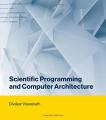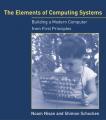see also
e-books in Software Engineering category
 Scientific Programming and Computer Architecture
Scientific Programming and Computer Architectureby Divakar Viswanath - The MIT Press , 2017
This book examines and explains a variety of scientific programming models with an emphasis on how programming constructs map to different parts of the computer's architecture. Two themes emerge: program speed and program modularity.
(6642 views)
 Introduction to Software Engineering
Introduction to Software Engineering- Wikibooks , 2013
The problems to solve in software engineering are so complex or large, that a single developer cannot solve them anymore. This book is an introduction to the art of software engineering. It is intended as a textbook for an undergraduate level course.
(11565 views)
 SOA eBook: Patterns, Mashups, Governance, Service Modeling, and More
SOA eBook: Patterns, Mashups, Governance, Service Modeling, and More- Pearson e ducation, Inc. , 2009
This volume is a collection of chapters from eight popular books, comprehensive tutorials that teach fundamental and advanced SOA design principles, supplemented with detailed case studies and technologies used to implement SOAs in the real world.
(8270 views)
 Jumpstart to Software Quality Assurance
Jumpstart to Software Quality Assuranceby Vishnuvarthanan Moorthy - Smashwords , 2013
Software Quality Assurance contributes in building capable processes in organization. This book provides practical insight for software quality analyst to start being productive within days, and contribute to building such capable processes.
(12367 views)
 Software Fault Tolerance
Software Fault Toleranceby Michael R. Lyu - John Wiley & Sons Ltd. , 1995
Software fault tolerance techniques involve error detection, exception handling, monitoring mechanisms and error recovery. This book also focuses on identification, application, formulation and evaluation of current software tolerance techniques.
(13874 views)
 Software Product Line: Advanced Topic
Software Product Line: Advanced Topicby Abdelrahman Osman Elfaki - InTech , 2012
The Software Product Line (SPL) is an emerging methodology for developing software products. There are two hot issues in the SPL: modelling and the analysis of the SPL. Variability modelling techniques have been developed to assist engineers ...
(10353 views)
 Handbook of Software Reliability Engineering
Handbook of Software Reliability Engineeringby Michael R. Lyu - McGraw-Hill , 1996
From leading industrial/research experts, here is an insider's look at today's best practices for software reliability engineering. This is a guide for software developers, designers, project managers, high-level applications programmers, et al.
(12293 views)
 The Elements of Computing Systems
The Elements of Computing Systemsby Noam Nisan, Shimon Schocken - MIT Press , 2005
The book exposes students to a significant body of computer science knowledge, gained through a series of hardware and software construction tasks. These tasks demonstrate how theoretical and applied techniques are used in practice.
(25235 views)
 A Gentle Guide to Constraint Logic Programming via ECLiPSe
A Gentle Guide to Constraint Logic Programming via ECLiPSeby Antoni Niederlinski , 2014
Introductory and down-to-earth presentation of Constraint Logic Programming, an exciting software paradigm, more and more popular for solving combinatorial as well as continuous constraint satisfaction problems and constraint optimization problems.
(10802 views)
 Software Architecture
Software Architectureby A. Bijlsma, B.J. Heeren, E.E. Roubtsova, S. Stuurman - FTA , 2011
The central theme of this book is balancing the concerns and requirements of stakeholders, combining these into an architecture proposal by employing known tactics and patterns, producing a description of the architecture that can be communicated.
(14416 views)
 Knowware: the third star after Hardware and Software
Knowware: the third star after Hardware and Softwareby Ruqian Lu - Polimetrica , 2007
This book proposes to separate knowledge from software and to make it a commodity that is called knowware. The architecture, representation and function of Knowware are discussed. The principles of knowware engineering are analyzed.
(12251 views)
 Acceptance Test Engineering Guide
Acceptance Test Engineering Guideby Grigori Melnik, Gerard Meszaros, Jon Bach - Microsoft , 2009
The Guide will provide guidance for technology stakeholders (developers, development leads, testers, test leads, architects, etc.) and business stakeholders (managers, customers, end users, etc) on the discipline of acceptance testing.
(12949 views)
 SOA Source Book
SOA Source Book- Van Haren Publishing , 2009
The SOA Source Book will help enterprise architects to use SOA effectively. It explains: What SOA is; How to evaluate SOA features in business terms; How to model SOA; How to use The Open Group Architecture Framework for SOA; SOA governance.
(13176 views)
 The Grand Unified Theory of Software Engineering
The Grand Unified Theory of Software Engineeringby Mathias Ekstedt - Industrial Info Systems , 2005
This book is the result of innumerable longwinded, oftentimes unnecessarily complicated, discussions between the authors on the nature of software engineering, machines, minds, design, software, engineering, organizations and more.
(13298 views)
 Software Foundations
Software Foundationsby Benjamin C. Pierce - University of Pennsylvania , 2010
These are notes for a course on software foundations, suitable for graduate or upper-level undergraduate students. They develop basic concepts of functional programming, logic, operational semantics, lambda-calculus, and static type systems.
(14309 views)
 Specifying Systems
Specifying Systemsby Leslie Lamport - Addison-Wesley Professional , 2002
This book shows how to write unambiguous specifications of complex computer systems. It provides a complete reference manual for the TLA+, the language developed by the author for writing simple and elegant specifications of algorithms and protocols.
(15933 views)
 Introduction to Reverse Engineering Software
Introduction to Reverse Engineering Softwareby Mike Perry, Nasko Oskov - UIUC , 2004
An introduction to reverse engineering software under both Linux and Windows. The author uses the Scientific Method to deduce specific behavior and to target, analyze, extract and modify specific operations of a program for interoperability purposes.
(15262 views)
 Advances in Human Computer Interaction
Advances in Human Computer Interactionby Shane Pinder - InTech , 2008
The book surveys the disciplines that inhabit the study and practice of human-computer interaction. The authors are passionate advocates of innovative applications, novel approaches, and modern advances in this exciting and developing field.
(17470 views)
 Practical Tips for Software-Intensive Student Projects
Practical Tips for Software-Intensive Student Projectsby Damith C. Rajapakse , 2008
A collection of practical tips gathered from the authors' software engineering experience and from many books on the topic. It does not intend to cover software engineering theory. The book is meant for software engineering project courses.
(19096 views)
 Software Engineering with Reusable Components
Software Engineering with Reusable Componentsby Johannes Sametinger - Springer , 2001
The book explains what is software reuse, what benefits to expect, different forms of software reuse, software components, different kinds of components, examples of successful component reuse, introduction to software engineering, and more.
(16513 views)
 Software Engineering
Software Engineeringby Ivan Marsic - Rutgers University , 2008
This book reviews some important technologies for software development with a focus on Web applications. Emphasis is on underlying principles and basic concepts. Written for upper-division undergraduate and graduate courses in software engineering.
(20047 views)
 The New Software Engineering
The New Software Engineeringby Sue Conger - Global Text Project , 2008
The book discusses software engineer's project related knowledge and theoretical background. It covers project planning, project life cycles, methodologies, technologies, techniques, tools, languages, testing, databases, and CASE.
(19932 views)
 Recommended Approach to Software Development
Recommended Approach to Software Developmentby Linda Landis, et al. - NASA , 1992
Guidelines for an organized approach to software development, based on studies conducted by the Software Engineering Laboratory, an organization sponsored by the NASA/GSFC. It describes methods for each phase of a software development life cycle.
(16746 views)
 Function Points Analysis Training Course
Function Points Analysis Training Courseby David Longstreet - SoftwareMetrics.Com , 2008
The book introduces the basic concepts of function point analysis and unit cost estimating, describes and defines the concepts necessary to establish a boundary between applications, identifies and rates external inputs and external outputs, etc.
(15398 views)
 Case Studies in Systematic Software Development
Case Studies in Systematic Software Developmentby Cliff B. Jones and Robert C. F. Shaw - Prentice Hall , 1990
This book covers the case studies on the application of the most widely known formal methods in software development, the Vienna Development Method. VDM was developed in an industrial environment but has also evoked considerable academic research.
(14772 views)
 Software Engineering for Internet Applications
Software Engineering for Internet Applicationsby Eve Andersson, Philip Greenspun, Andrew Grumet - The MIT Press , 2006
After completing this course on server-based Internet applications software, students who start with only the knowledge of how to write and debug a computer program will have learned how to build web-based applications on the scale of Amazon.com.
(19619 views)
 Communicating Sequential Processes
Communicating Sequential Processesby C.A.R. Hoare - Prentice Hall , 2004
CSP is a language for describing patterns of interaction. It is supported by an elegant mathematical theory, a set of proof tools, and an extensive literature. The book is an excellent introduction to the language, and also to the mathematical theory.
(13292 views)
 The Guide to the Software Engineering Body of Knowledge
The Guide to the Software Engineering Body of Knowledgeby P. Bourque, R. Dupuis, A. Abran, J. W. Moore, and L. L. Tripp - IEEE , 2004
The purpose of this guide is to provide a consensually validated characterization of the bounds of the software engineering discipline and to provide a topical access to the Body of Knowledge supporting that discipline.
(19020 views)